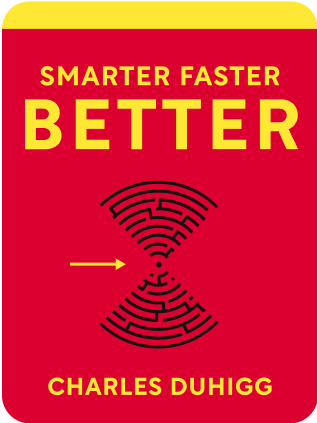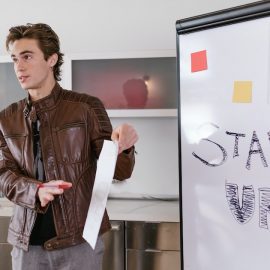

This article is an excerpt from the Shortform book guide to "Smarter Faster Better" by Charles Duhigg. Shortform has the world's best summaries and analyses of books you should be reading.
Like this article? Sign up for a free trial here .
Do you need to generate new ideas for a project? Are you feeling stuck, wondering where the next idea will come from?
Even Disney’s world-class creative teams struggle sometimes. During the production of Frozen, they ran up against problems. The solution was to generate new ideas.
Read more to discover the techniques that the Frozen creative team used to generate new ideas.
How Disney Turned Frozen Around
It’s hard to imagine that Disney’s Frozen was ever anything but a smash hit movie. But, just 18 months before Frozen was due to be released, the film had numerous issues:
- The characters weren’t likable and it was difficult to root for them.
- There were significant plot holes.
- The plot twists were predictable.
- The characters’ individual stories didn’t combine into a core narrative.
The result was a film that audiences struggled to connect to emotionally.
Frozen’s creative team knew that they needed to generate new ideas—and fast. In the end, they used some of the principles outlined in Smarter Faster Better by Charles Duhigg to turn the film’s fortunes around.
Solution #1: Using Emotions and Experiences to Generate New Ideas
Frozen’s creative team used their own experiences and emotions to create characters and character dynamics that felt more authentic. For example, they used their own experiences of sibling relationships to make Anna and Elsa’s sisterly dynamic feel more “real.”
At first, Frozen’s writers had chosen a binary “Anna is good, Elsa is evil” dichotomy to create tension between the sisters. However, they eventually realized that this didn’t feel true. Nobody is purely “good” or “evil.” We’re all complex humans and bring that complexity to our relationships. The writers needed to reflect this in Anna and Elsa’s relationship if they wanted the audience to connect with the characters.
The writing team was particularly inspired by writer Jennifer Lee’s experience with her sister. They’d become distant as they’d grown older, creating tension between them. However, they grew closer again when, in a time of great need, Lee’s sister was there for her. In many ways, Anna and Elsa’s relationship in the final film reflects this real-life situation. The result is a relatable dynamic that feels much more authentic.
Another example of this principle is one of the film’s chief songwriters, Kristen Anderson-Lopez, channeling her own experiences and emotions when writing Elsa’s signature song, “Let It Go.”
Lopez conceived Elsa as a character who’s judged for both having a curse and not managing to control that curse perfectly. To make Elsa’s reaction to her treatment feel authentic, Lopez considered times when she’d felt judged or been held to impossible standards, and what her reaction to such situations had been. Lopez realized that she wanted to let go of other people’s expectations and opinions. She felt that this should be Elsa’s response, too. Thus, the concept of the song “Let It Go” was born. Her experience led her to generate new ideas.
Solution #2: Reigniting an Openness to New Ideas
Eventually, Frozen’s team successfully laid out two-thirds of the film’s plot. However, they then became stuck. They realized that they had no idea how the film should end.
A major factor that contributed to this creative roadblock was the team’s relief that they’d finally been able to generate new ideas. Because of this relief, they’d become attached to their ideas, and they weren’t willing to revisit them to see if there was a better way forward that would make the film’s ending clearer. They didn’t want to lose the progress they’d made.
Disney’s executives recognized that to get out of this rut, the creative team needed to be shaken up. So they decided to promote writer Jennifer Lee to a directorial role.
This change had the intended effect. Lee underwent a small shift in perspective that unlocked her creativity. As a writer, she’d spent most of her time pitching ideas. Now, as a director, she spent more time listening to others’ ideas. Each team member pitched an ending that focused on a different core idea or theme of the movie. However, none of these endings felt quite right.
Lee began to think about the core idea that she wanted to communicate in the ending. She decided that she wanted to explore the nature of love and fear; specifically, that love is a much more powerful force than fear. Thanks to this breakthrough, Lee and her team were able to come up with the ending that made it into Frozen’s final cut. One small change in the team dynamic led to this productive innovation.
It’s encouraging to hear stories like this. We can learn how to generate new ideas from some of the best in the business.

———End of Preview———
Like what you just read? Read the rest of the world's best book summary and analysis of Charles Duhigg's "Smarter Faster Better" at Shortform .
Here's what you'll find in our full Smarter Faster Better summary :
- Why becoming more productive isn’t about working longer hours or constantly pushing yourself to do more
- The 8 principles for improving productivity
- How to create a work culture in which each employee is truly valued






